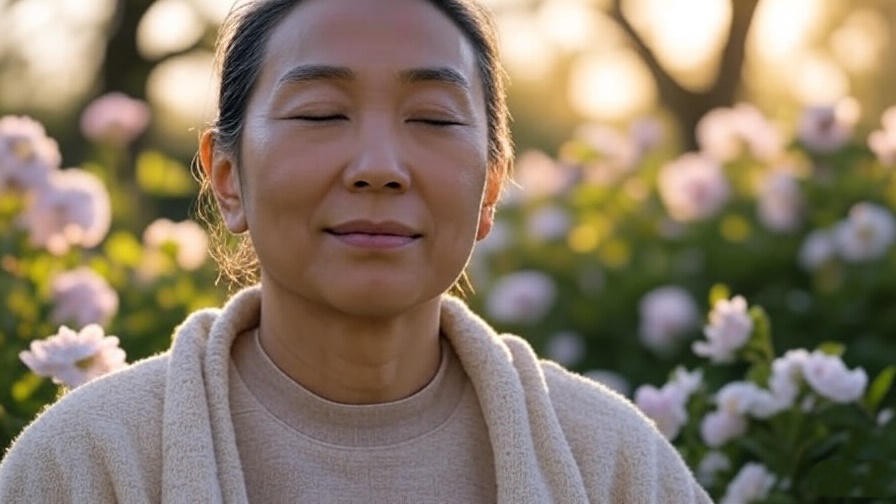Picture this: It’s late at night, and your dog is curled up in their bed, paws twitching, and their tail gently wagging in sleep. You can’t help but smile and wonder—what’s going on in that furry head? Is your dog chasing squirrels in a dream or reliving a joyful moment from the day? The phenomenon of a dog wagging its tail in sleep sparks curiosity among pet owners, and for good reason—it’s a window into the mysterious world of canine dreams. Understanding this behavior not only satisfies our curiosity but also deepens our bond with our pets, enhancing their well-being and ours. In this comprehensive guide, we’ll explore the science behind why dogs wag their tails in sleep, what they might be dreaming about, and how to support their rest for a happier, healthier life. Backed by veterinary insights and cutting-edge research, this article will answer your questions and offer practical tips to ensure your dog’s sleep is as restful as possible.
What Does It Mean When a Dog Wags Its Tail in Sleep?

Understanding Canine Sleep Patterns
Dogs, much like humans, experience distinct sleep cycles that include periods of deep rest and dreaming. The most critical phase for dreaming is Rapid Eye Movement (REM) sleep, during which the brain is highly active, processing emotions and experiences. According to a 2001 study from the Massachusetts Institute of Technology (MIT), animals, including dogs, exhibit brain activity during REM sleep similar to humans, suggesting they dream vividly. Dogs typically enter REM sleep within 20–30 minutes of falling asleep, and this phase can last for several minutes, recurring multiple times throughout the night.
Unlike humans, dogs sleep in shorter bursts, often taking naps throughout the day. This polyphasic sleep pattern means they may experience more frequent REM cycles, increasing the likelihood of observable dream behaviors like tail wagging. Understanding these cycles helps pet owners appreciate that a dog wagging its tail in sleep is a natural part of their rest, not a cause for alarm in most cases.
The Science Behind Tail Wagging in Sleep
When a dog wags its tail during sleep, it’s often a result of involuntary muscle movements triggered by neurological activity in the brain. During REM sleep, the brain sends signals to the body, causing twitches in the limbs, face, or, in this case, the tail. Dr. Karen Becker, a renowned integrative veterinarian, explains, “These movements are a reflection of the brain processing emotions or memories, much like humans might talk or move in their sleep.” Tail wagging in sleep is often linked to positive emotions, as it mirrors the conscious behavior dogs exhibit when excited or happy.
However, not all tail movements indicate joy. The speed and direction of a wag can convey different emotions—rapid wags often signal excitement, while slower, broader wags may indicate agitation. In sleep, these movements are less controlled, but they still offer clues about the dog’s dream state. Research from the University of British Columbia (2020) suggests that dogs process daily experiences in their dreams, so a wagging tail might reflect a memory of playtime or a favorite activity.
Common Misconceptions About Dogs and Dreams
One common myth is that dogs only dream about chasing prey or running. While physical activities may feature in their dreams, dogs also process complex emotions, such as bonding with their owners or responding to stimuli from their environment. Another misconception is that tail wagging in sleep always means happiness. While it often does, dogs can also exhibit stress-related movements, such as trembling or rapid twitching, which may be mistaken for wagging.
To clarify, tail wagging in sleep is typically benign, but context matters. Observing your dog’s overall body language—such as relaxed breathing versus tense postures—can help distinguish between a pleasant dream and potential discomfort. By debunking these myths, pet owners can better interpret their dog’s sleep behaviors and respond appropriately.
Why Do Dogs Dream? Exploring Canine Dream Content
Do All Dogs Dream the Same Way?
Not all dogs dream with the same frequency or intensity. Puppies and senior dogs tend to dream more often due to their higher REM sleep cycles. A 2018 study from the University of British Columbia found that younger dogs, with their developing brains, enter REM sleep more frequently, leading to more noticeable dream behaviors like tail wagging or paw twitching. Smaller breeds, such as Chihuahuas, also tend to dream more often than larger breeds like Great Danes, possibly due to differences in metabolism and sleep patterns.
Breed-specific traits can also influence dreaming. For example, high-energy breeds like Border Collies may exhibit more pronounced movements in sleep, reflecting their active daytime behaviors. Understanding these differences helps owners tailor their care to their dog’s unique needs, ensuring optimal rest.
What Might Your Dog Be Dreaming About?
While we can’t peek into a dog’s dreams, researchers believe they likely relive daily experiences. A dog wagging its tail in sleep might be dreaming of chasing a ball, greeting their owner, or enjoying a favorite treat. Dr. Stanley Coren, a canine behavior expert, suggests that dogs’ dreams are rooted in familiar activities and emotions, such as playing at the park or cuddling with their family. For instance, if your dog loves long walks, their tail wagging in sleep could reflect the joy of scampering through a familiar trail.
Dogs also process social interactions in their dreams. A wagging tail might indicate a dream about bonding with you or another pet. This emotional processing is crucial for their mental health, reinforcing the importance of positive daytime experiences to shape restful sleep.
The Emotional Significance of Tail Wagging
Tail wagging in sleep often suggests positive emotions, mirroring the joy or excitement dogs express when awake. However, it’s essential to consider the broader context. A slow, deliberate wag might indicate a more complex emotional state, such as alertness or mild stress. To interpret these signals, observe your dog’s body language during sleep. Relaxed ears, steady breathing, and gentle movements typically point to pleasant dreams, while tense postures or whimpering may suggest discomfort.
Practical tip: Keep a journal of your dog’s sleep behaviors, noting the frequency and nature of tail wagging. This can help you identify patterns and discuss any concerns with your veterinarian, ensuring your dog’s emotional and physical health.
Is Tail Wagging in Sleep Normal or a Cause for Concern?
Normal vs. Abnormal Sleep Behaviors
Most sleep behaviors, including tail wagging, twitching, or soft vocalizations, are perfectly normal. These movements occur during REM sleep and reflect the brain’s activity. According to the American Kennel Club, common signs of dreaming include paw paddling, ear flicking, and, of course, tail wagging. These behaviors are especially prevalent in puppies, who process a high volume of new experiences daily.
However, not all movements are benign. Abnormal behaviors, such as violent shaking, prolonged whimpering, or rigid body postures, could indicate underlying issues like seizures or pain. Dr. Jennifer Coates, a veterinarian with over 20 years of experience, advises, “Occasional twitching is normal, but repetitive, intense movements or distress signals warrant a vet visit.” Monitoring your dog’s sleep can help you distinguish between harmless dreams and potential health concerns.
When to Consult a Veterinarian
If you notice unusual behaviors, such as frequent waking, excessive trembling, or signs of distress (e.g., loud whining or panting), it’s time to consult a veterinarian. These could indicate conditions like neurological disorders, anxiety, or pain. To help your vet assess the situation, track your dog’s sleep patterns with a simple checklist:
- Frequency and duration of tail wagging or other movements
- Presence of vocalizations (e.g., barking, whimpering)
- Changes in sleep duration or quality
- Any daytime symptoms, such as lethargy or reduced appetite
Regular veterinary checkups are essential for holistic pet health. By addressing potential issues early, you can ensure your dog enjoys restful sleep and a high quality of life.
How to Support Your Dog’s Sleep and Dream Quality

Creating a Sleep-Friendly Environment
A restful environment is crucial for your dog’s sleep quality, which directly influences their dream behaviors, such as tail wagging in sleep. To optimize their sleep space, consider the following tips:
- Comfortable Bedding: Provide a supportive, cozy bed suited to your dog’s size and preferences. Orthopedic beds are ideal for senior dogs with joint issues.
- Quiet Surroundings: Minimize noise disruptions, especially during naps, by placing the bed in a calm area of your home. White noise machines can help mask external sounds.
- Consistent Routine: Dogs thrive on routine. Establish regular sleep and wake times to align with their natural rhythms, promoting deeper REM cycles.
These steps not only enhance your dog’s sleep but also contribute to your household’s sense of calm, aligning with holistic well-being principles. A well-rested dog is happier and more engaged, strengthening your bond.
The Role of Exercise and Mental Stimulation
Physical activity and mental enrichment during the day play a significant role in improving sleep quality and influencing dream content. A 2019 study from the Journal of Veterinary Behavior found that dogs with adequate exercise exhibit fewer sleep disturbances and more consistent REM cycles. Activities like long walks, fetch, or agility training tire your dog physically, while puzzle toys or training sessions stimulate their mind.
For example, teaching your dog a new trick, like “roll over,” engages their cognitive abilities, leading to richer dream experiences—potentially reflected in tail wagging during sleep. Aim for at least 30–60 minutes of daily exercise, tailored to your dog’s breed and energy level. High-energy breeds like Australian Shepherds may need more, while smaller breeds like Pugs require less intense activity. By keeping your dog active and mentally engaged, you set the stage for restful sleep and vivid, positive dreams.
Diet and Its Impact on Sleep
Nutrition plays a critical role in sleep quality for dogs, just as it does for humans. A balanced diet supports overall health, including neurological function and emotional well-being. Veterinary nutritionist Dr. Lisa Freeman emphasizes that nutrients like omega-3 fatty acids, found in fish oil, can reduce inflammation and promote calm, restful sleep. Foods rich in tryptophan, such as turkey or certain commercial dog foods, may also enhance sleep by boosting serotonin levels, a precursor to melatonin.
To optimize your dog’s diet for better sleep:
- Choose high-quality dog food with natural ingredients and avoid fillers like corn or soy.
- Incorporate sleep-supporting foods, such as small amounts of cooked turkey or supplements recommended by your vet.
- Ensure consistent feeding times to stabilize your dog’s internal clock.
Consult your veterinarian before making dietary changes, especially for dogs with specific health needs. A well-nourished dog is more likely to experience restful sleep, potentially leading to those heartwarming tail wags in their dreams.
The Connection Between Canine Dreams and Owner Well-Being

Strengthening the Human-Pet Bond
Observing your dog wagging its tail in sleep can be a delightful reminder of the emotional connection you share. Understanding these behaviors fosters empathy, as you gain insight into your dog’s inner world. For instance, a pet owner named Sarah noticed her Labrador, Max, wagging his tail during sleep after a day at the dog park. By recognizing this as a sign of joyful dreams, she felt closer to Max, appreciating his happiness even in rest. This deepened bond aligns with the site’s focus on happiness and holistic well-being, as caring for your dog’s emotional health enhances your own.
To strengthen this bond, spend quality time with your dog during the day—whether through play, training, or simply cuddling. These positive interactions not only enrich their dreams but also create shared moments of joy, fostering mutual trust and affection.
Mindfulness Practices Inspired by Pets
Your dog’s peaceful sleep can inspire mindfulness practices that benefit your own well-being. Watching your dog sleep, with gentle tail wags or soft twitches, can be a grounding experience. Try this simple exercise: Sit quietly near your sleeping dog, focus on their steady breathing, and let it guide you into a moment of calm. This practice, rooted in mindfulness, reduces stress and promotes relaxation, aligning with the site’s meditation focus.
You can also practice gratitude by reflecting on your dog’s joyful moments, like those dreamy tail wags. Journaling about these observations can deepen your appreciation for your pet, enhancing your emotional resilience. As Dr. John Bradshaw, a canine behavior expert, notes, “Pets teach us to stay present, and their simple joys remind us to find peace in the moment.”
Holistic Benefits of Pet Ownership
Pet ownership offers profound benefits for mental and physical health, which extend to sleep quality for both you and your dog. A 2017 study from the American Psychological Association found that pet owners report lower stress levels and improved sleep compared to non-pet owners, thanks to the calming presence of animals. Watching your dog sleep peacefully can lower your heart rate and create a sense of calm, making it easier to unwind at night.
Moreover, caring for your dog’s sleep health encourages you to prioritize your own. By creating a shared routine—such as evening walks followed by quiet time—you and your dog can both enjoy better rest. This mutual well-being reinforces the holistic connection between you, supporting the site’s mission to promote happiness and health.
Frequently Asked Questions (FAQs)
Should I Wake My Dog If They’re Wagging Their Tail in Sleep?
In most cases, it’s best to let your dog sleep undisturbed. Tail wagging during sleep is a normal part of REM sleep and indicates they’re dreaming. Waking them could disrupt their rest and cause confusion. However, if your dog shows signs of distress—such as loud whimpering or violent shaking—gently call their name to rouse them. Dr. Karen Becker advises, “Trust your instincts, but avoid startling your dog awake unless necessary.”
Do Certain Breeds Wag Their Tails More in Sleep?
Breed-specific tendencies can influence sleep behaviors. High-energy breeds, like Border Collies or Jack Russell Terriers, may exhibit more pronounced movements, including tail wagging, due to their active personalities. Smaller breeds, with faster metabolisms, may also dream more frequently. However, individual personality plays a significant role—calm dogs may show subtler movements regardless of breed.
Can I Influence What My Dog Dreams About?
While you can’t directly control your dog’s dreams, positive daytime experiences can shape their content. Engage your dog in activities they love, such as playing fetch or exploring new trails, to create happy memories that may surface in their dreams. Avoid stressful situations, as these can lead to unsettled sleep. Consistency in routine and environment also promotes pleasant dreams.
Is Tail Wagging in Sleep a Sign of a Health Issue?

Tail wagging in sleep is typically normal, reflecting dream activity. However, excessive or unusual movements—such as rigid shaking or prolonged distress—could indicate health issues like seizures or pain. Monitor your dog’s sleep patterns and consult a veterinarian if you notice anything concerning, especially if accompanied by daytime symptoms like lethargy or appetite changes.













